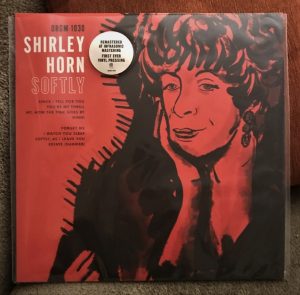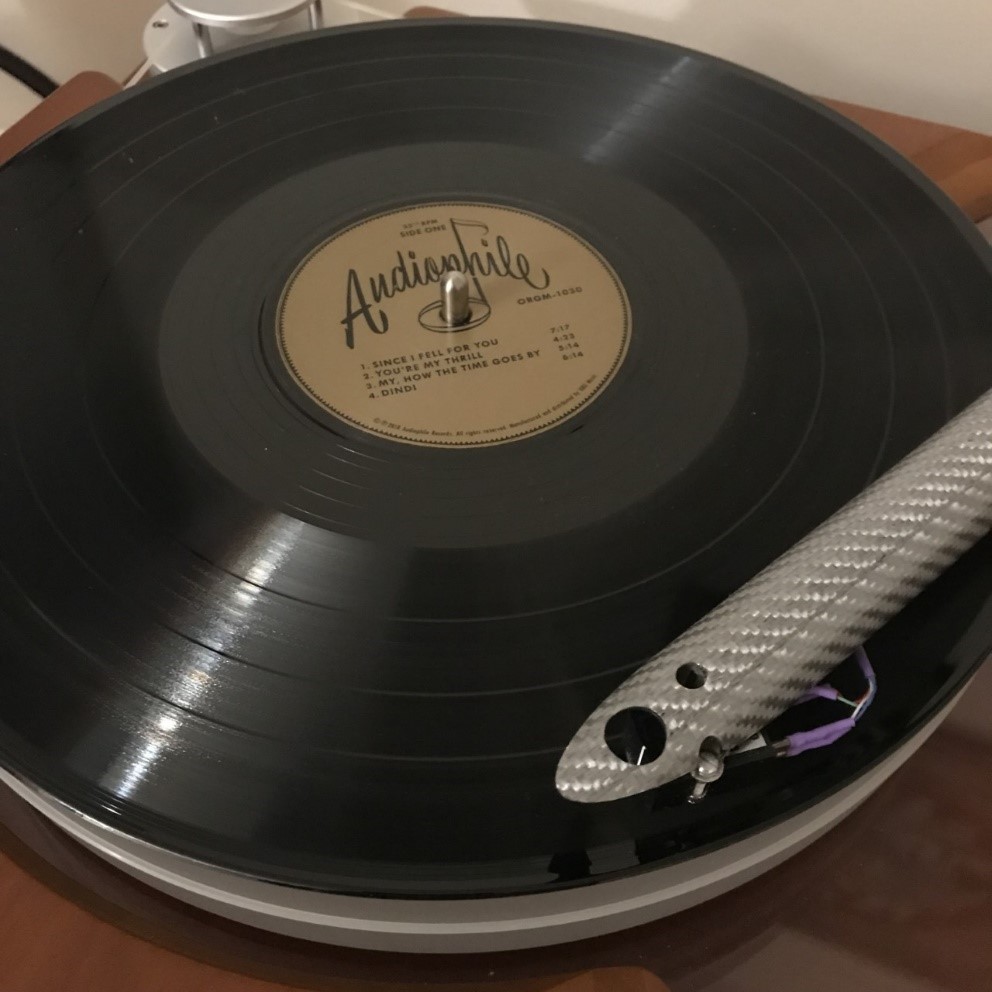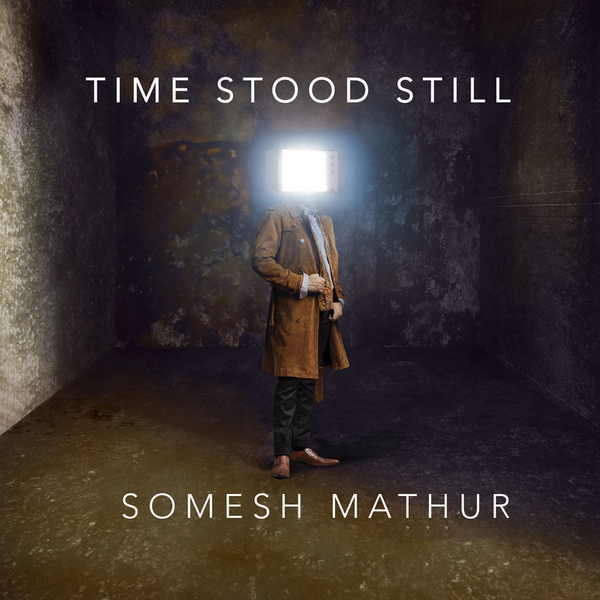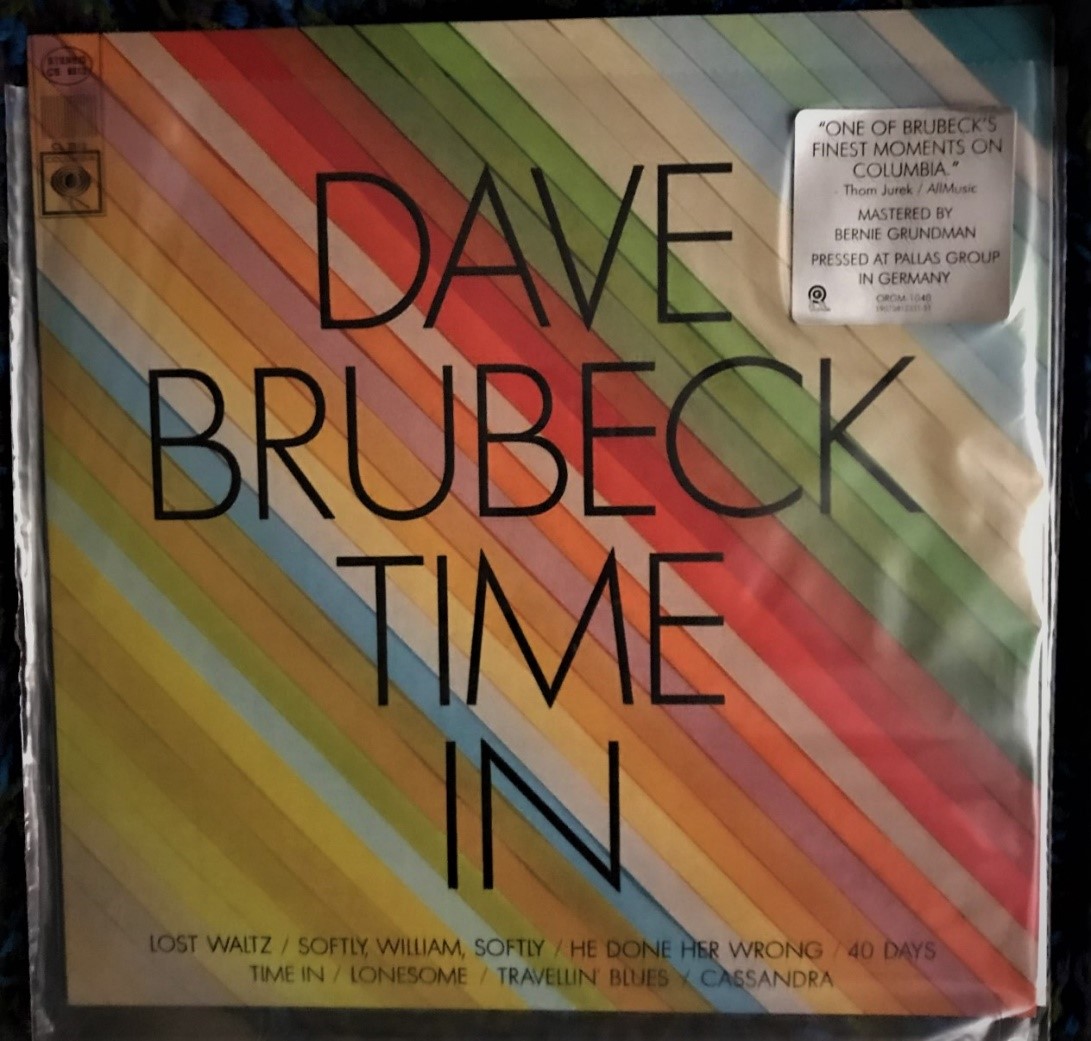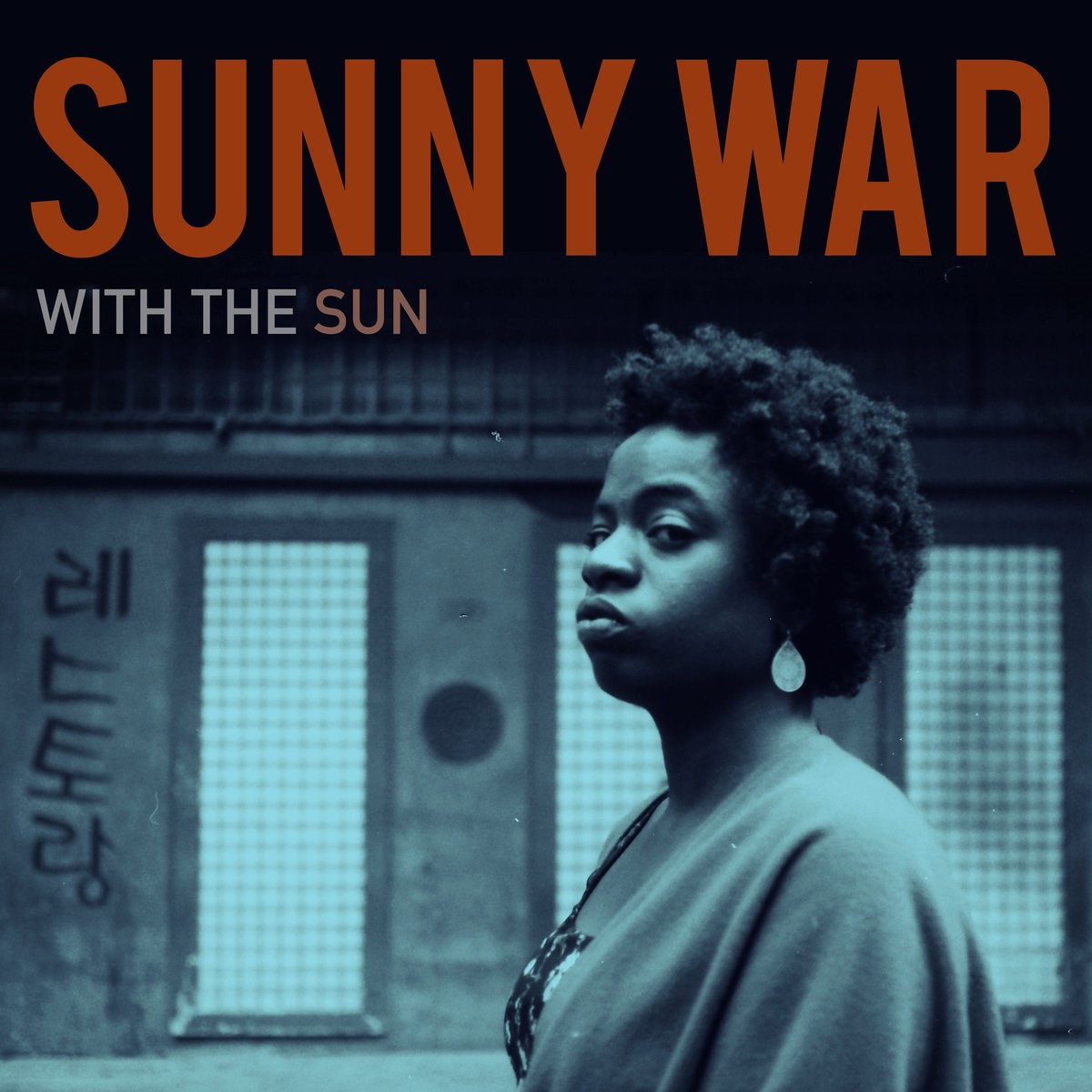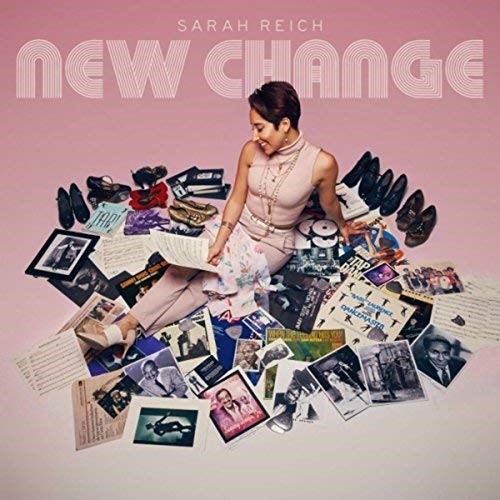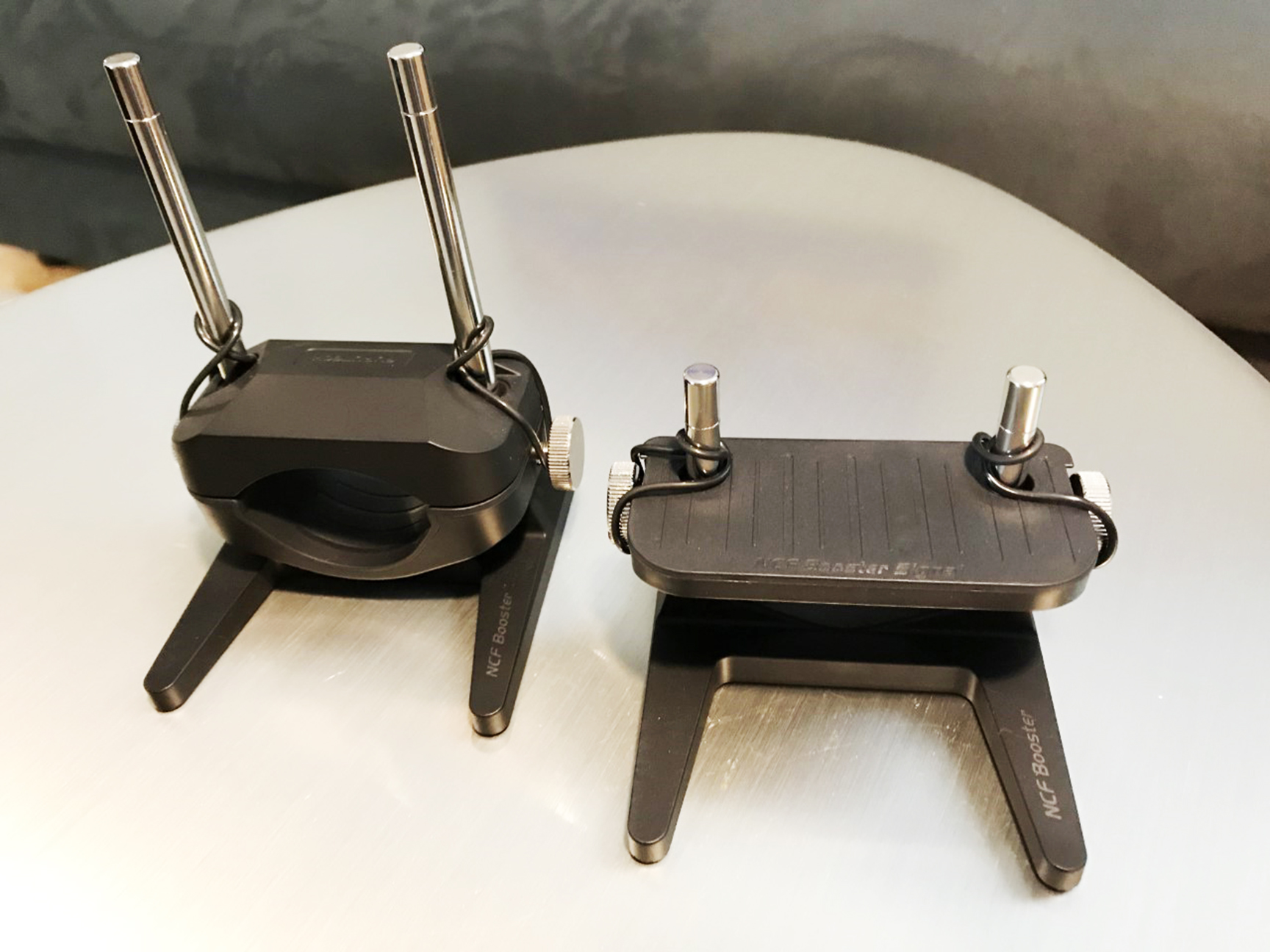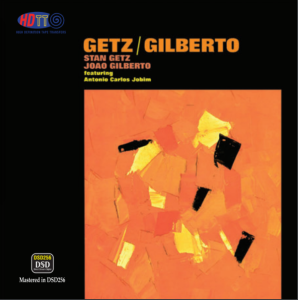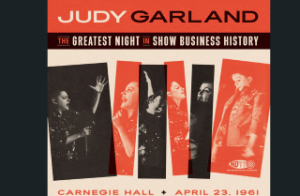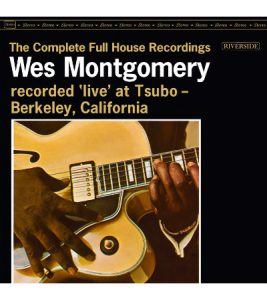ORGM-1030, LP $24, available at https://orgmusic.merchnow.com/products/v2/276626/softly-black-vinyl
This one threw me for a loop, as my mom likes to say when she's thrown for a loop. I took one look at the cover and thought, "Oh, here's another wonderful ORG reissue from the Golden Age of Jazz." I know of Shirley Horn, but I'm not that knowledgeable about her. When I played Softly for the first time, I loved it—not only is it one of the softest recording of jazz standards I've heard in a while, but I admired the easy and delicate sound quality of this reissue. The pressing was exceptionally quiet, as usual for ORG, and yet something was different about it, something I couldn't put my finger on.
The first clue should have been that sticker on the clear outside sleeve that exclaimed "First Ever Vinyl Pressing." What do you mean, first vinyl pressing? What else could they have released it on back in the day? Reel-to-reel? Eight-track? I took a Wiki run at it and discovered that Softly was recorded in 1988, not exactly an immortal year in the history of jazz. That means it's only been available on CD until now, which is a shame since it's the kind of classic jazz album that should only be heard on vinyl.
Don't let that release date stop you from getting this. It's superb. Softly is to Shirley Horn, and women jazz singers in general, as Dream with Dean is to Dean Martin. It's beyond intimate—it's naked.
Softly is one of those jazz albums that becomes even more enjoyable when you learn the story behind it. This was one of those legendary, off-the-cuff late-night recording sessions that became history, a set that was performed in Pierre Sprey's living room in Maryland. (This was, of course, the location of Sprey's Mapleshade Studio, so it's not as spontaneous as it seems.) Horn, who also plays piano, was backed by her usual sidemen—bassist Charles Ables and drummer Steve Williams—and the trio played until dawn. That's the way they usually did it in 1958, not thirty years later.
Joel Siegel, the producer, reminisced about the magic of that evening by explaining that "…her performances here, protected from the time-is-money anxiety and clinical ambience of commercial recording studios, and surrounded by devoted friends and, inevitably food, is more introspective and emotionally intense than anything she has recorded to date." The word intense is an important key here, since this album is anything but sedate. It's quiet, yes. It's softer than soft. But deep down there's an urgency, a yearning that comes out in Horn's velvety singing style, and the way her piano sounds like a natural extension of those alluring words she sings.
Once you hear this on vinyl, you might feel sorry for all those Shirley Horn fans who ran out and bought this on CD. They probably loved it and marveled at the lack of surface noise and all the other reasons to get excited about the compact disc in the late '80s. But they probably didn't get the full measure of the warmth in her voice, the way she expresses her positions so that her lover can't help but make it all up to her. Horn has a very distinctive delivery, breathy and full, that almost feels warm against the back of your neck. Did the CD capture that? Maybe, maybe not.
Another thing these fans might have missed is the surprising, almost mechanical sound of Williams' drumming. Here is where I became suspicious of the date of the recording—Golden Era drums are seldom captured in this way. There's a sense of the drum set and the materials that it is made from, as opposed to the distinct shimmer on top of the cymbals and the bounce off the drum heads. A lot of this has to do with Williams' style, they way his sticks hit the center of his cymbals to produce a distinctive clang. He's more percussive, for lack of a better word, in the way he conveys the sound of two objects colliding. I'm not saying that you won't find a drummer who sounds like this back in the late '50s or early '60s, but I am saying that the guys at the mixing board might have attempted to make these sounds resemble something more contemporary. In 1988, they might have taken a chance or two. That's a tiny detail, of course, but it's one that stood out for me and triggered something in my brain.
I don't want to be dismissive toward the entire lot of jazz recordings of 1988, but Softly must have been an antidote for those old-school jazz fans, a "they don't make 'em like this anymore" sort of epiphany. I have a feeling that if Softly was recorded today, it would sound a lot more like it would have sounded in 1958 because we now realize how special those recording methods were. In 1988, we were all obsessed with digital technologies and recording techniques, which is why everything from that period tends to sound at least a little glassy. We thought it was better.
That makes this album unique in a very small way. It does sound like a lost classic from sixty years ago, not thirty years ago, and you'll only grow suspicious if you've been listening to plenty of the good stuff from the dawn of stereo recordings. But make no mistake—this is the good stuff, timeless and uncompromising.




